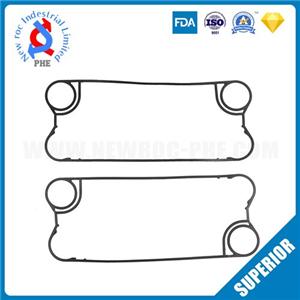Method for reducing resistance of plate heat exchanger
Recently, many customers contacted us and asked us about the problems they encountered during the use of plate heat exchangers. I hope we can help. Today, the editor will discuss with you the knowledge of plate heat exchangers in these issues. Now, I hope to bring inspiration and help to our customers and friends, so that everyone has a deep understanding of plate heat exchangers. In this way, everyone can know what they are doing in the future, and they can play the best role of the plate heat exchanger without rushing. Method for reducing resistance of plate heat exchanger:
1. Adopt multi-process combination
When the flow rate of the cold and heat medium is large, a combination of multiple processes can be used, and more processes are used on the side of the small flow to increase the flow rate and obtain a higher heat transfer coefficient. A smaller process is used on the large flow side to reduce the resistance of the heat exchanger. Mixed flow patterns appear in multi-process combinations, and the average heat transfer temperature difference is slightly lower. Both the fixed end plate and the movable end plate of the plate heat exchanger with multi-process combination have takeovers, which requires a lot of work during maintenance.
2. Adopt asymmetric plate heat exchanger
The symmetrical plate heat exchanger is composed of plates with the same corrugated geometry on both sides of the plate, forming a plate heat exchanger with equal cross-sectional areas of the cold and hot runners. According to the heat transfer characteristics and pressure drop requirements of the cold and hot fluids, the asymmetric plate heat exchanger changes the waveforms on both sides of the plate to form a plate heat exchanger with unequal cross-sectional areas of the cold and hot runners. The corner diameter is larger. The heat transfer coefficient of the asymmetrical plate heat exchanger decreases slightly, and the pressure drop is greatly reduced. When the flow of cold and heat medium is relatively large, the use of an asymmetric single-process heat exchanger can reduce the plate area by 15%-30% compared to a symmetrical single-process heat exchanger.
3. Set the bypass pipe of the heat exchanger
When the flow of cold and heat medium is relatively large, a bypass pipe can be set between the outlets of the heat exchanger on the side of the large flow to reduce the flow into the heat exchanger and reduce the resistance. To facilitate adjustment, a regulating valve should be installed on the bypass pipe. This method should adopt a countercurrent arrangement to make the temperature of the cold medium exiting the heat exchanger higher, and to ensure that the temperature of the cold medium after the confluence of the heat exchanger outlet can meet the design requirements. The bypass pipe of the heat exchanger can ensure that the heat exchanger has a higher heat transfer coefficient and reduce the resistance of the heat exchanger, but the adjustment is slightly complicated.
4. Selection of plate heat exchanger form
5. Adopt thermal mixing plate




